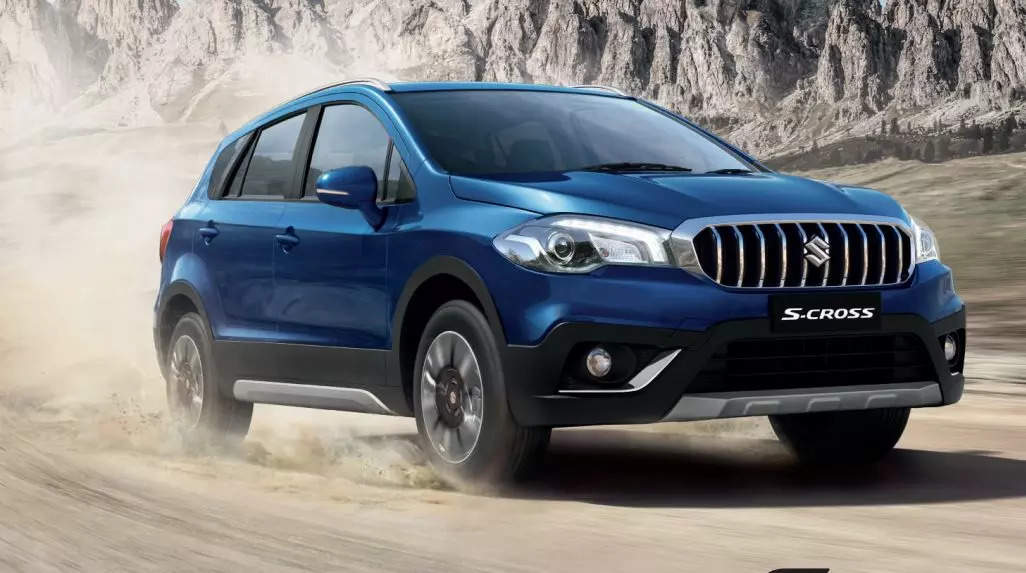
One may be a champion in a game, but may still be weak in an area or two. PV market leader Maruti Suzuki would relate to that. In the growing segment of around 48 SUVs, which now contributes to over 40% of the PV market volumes, Maruti Suzuki has only 2 models with an overall segment share of 11%. Starting this month, the OEM wants to change that, swiftly.
After the updated Brezza, launched on Thursday with prices ranging from INR 8 lakh to 14 lakh, the OEM prepares for its next SUV introduction in the third week of this month. This model, co-developed with Suzuki’s ally Toyota, will be quite crucial as it will mark Maruti Suzuki’s serious entry into the midsize SUV segment, which in terms of volumes is 18% or so of the over 120,000-unit SUV pie in India.
Maruti Suzuki has only a 3% share in the midsize SUV segment with the S-Cross, which originally was positioned as a crossover. The model, with sales of around 20,000 a year, fared below expectations. It is set to bid adieu to make way for fresh models.
Along with the new Brezza, the next model will have the responsibility to help Maruti Suzuki regain lost share in the PV marketplace. “It will help us reach 50% market share,” Shashank Srivastava, senior ED – marketing and sales, Maruti Suzuki, said. The new model will compete with the likes of Hyundai Creta, Tata Harrier, and Kia Seltos.
The new model will be powered by Maruti Suzuki’s mild hybrid technology. Mass production of the model will begin from August, in Toyota Kirloskar Motor’s plant at Bidadi, Karnataka.
Maruti Suzuki expects the midsize SUV sub-segment to get busier with more players, similar to the compact SUV space which has 16 brands today with cumulative annual sales of 650,000 units in 2021-22. The compact SUV sub-segment has the largest share, of 22%, in the SUV market. Maruti Suzuki’s Brezza and Tata Motors’ Nexon lead this segment with each selling around 115,000 units annually.
Creating new opportunities in SUV space
Srivastava was candid in admitting that there was a misreading of the SUV trend, which resulted in Maruti Suzuki “lagging” behind some of its peers in what is largely the market’s favourite segment, and likely to remain so for the foreseeable future. However, Maruti Suzuki now doesn’t want to lose any time to make efforts in more than recovering lost opportunities.
“Wherever volumes increase, sub-segments emerge,” Srivastava said, citing the example of the birth of sub-segments in the hatchback market, where Maruti Suzuki with 6 models claims a market share of 80%. The OEM is studying the market to identify potential sub-segments and reap benefits of a first mover. “We will try to bring products in those sub-segments,” he said.
Hatching SUVs, with continued focus on hatchbacks
Even as Maruti Suzuki is training its focus on building its presence in the SUV space, the OEM sees hatchbacks also as a major segment to remain focused on. “We are not going to give up hatchbacks. Who will leave a segment with a size of 12 lakh units (annually)?,” Srivastava said and added that “small cars are not going anywhere”.
Srivastava points out that the hatchback segment, with about 40% share still in the overall PV market, continues to garner over 50% of the first-time car buyers.
Demand continues, in spite of semiconductor challenge remains
Maruti Suzuki expects the PV industry volumes to reach up to 3.5 million units during this financial year. Last year the OEM sold 1.65 million vehicles. Though there’s demand, production challenges continue. Semiconductor availability remains the main reason, even though the scarcity challenge has improved to a good extent.
Maruti Suzuki has reached a level of 95% of planned production from the “worst” month of September last year when the OEM could produce only 40%of what was planned. The production constraints have also led to an order backlog of 305,000 vehicles for the OEM.
The semiconductor challenge is likely to continue for some more time. “We don’t have the visibility of semiconductor availability for a long time,” Srivastava said
The just-launched Brezza, Srivatstava said, has received 46,000 bookings till today. The waiting period would be around four and a half months. “We are currently increasing production to bring down the waiting period,” he said.
A waiting period in any segment, though avoidable, is any day better than no demand due to lack of presence. Maruti Suzuki will now look at having the former problem with its new market interventions.
















